wikiHow is a “wiki,” similar to Wikipedia, which means that many of our articles are co-written by multiple authors. To create this article, volunteer authors worked to edit and improve it over time.
There are 8 references cited in this article, which can be found at the bottom of the page.
wikiHow marks an article as reader-approved once it receives enough positive feedback. In this case, 91% of readers who voted found the article helpful, earning it our reader-approved status.
This article has been viewed 101,467 times.
Learn more...
A baker’s cyst (popliteal cyst) is a pocket filled with fluid that forms behind the knee. It can make you knee feel tight and painful. These cysts are very common and can be caused by anything that makes your joints swell up, including arthritis. Sometimes, these cysts don't display any symptoms and are only found when the person goes to the doctor for another reason.[1] Knowing the symptoms can help you to identify a baker's cyst if you think you might have one.
Steps
Recognizing Early Symptoms
-
1Look for swelling in the area behind your knee. This swelling is caused by fluid forming in the cyst, causing the area to become inflamed.[2] The swelling will look like a bulge at the back of the knee and is best seen when you are standing up and your leg is straightened.[3]
- You can also tell if your knee is swollen by standing in front of a mirror and comparing it to your other knee.
-
2Feel for any tightness behind your knee. When the fluid in the cysts accumulates, it will put pressure on the back of your knee.[4] You might feel like your knee is about to burst, particularly when you are standing up with your legs straight--this is when the skin around your knee is fully stretched and you’ll be able to notice the feeling of tightness.[5]Advertisement
-
3Monitor any stiffness you feel around your knee. Stiffness is different than tightness in that if you are stiff, you will feel like you have a hard time bending your knee.[6]
Tightness, on the other hand, will feel like your knee is a water balloon that is about to pop. Your knee might feel stiff because the cyst will cause the joint and muscles in your knee to become inflamed, making them stiff.[7]- You might also find that you feel discomfort when you have to stand for a long period of time.
-
4Pay attention to any pain you feel at the back of your knee. When the cyst behind your knee fills with fluid, it will put pressure on your knee. It may also put pressure on the nerves in the area behind your knee; when nerves are pressed on, you might feel pain.
If the cyst is pressing nerves you will definitely feel pain when you move your knee a lot.[8] Most people with baker’s cysts describe the pain in two ways:- Some people feel localized pain, which means they feel intense pain right where the swelling is worst.
- Some people feel general pain through the knee.
Recognizing Later Symptoms
-
1Monitor an increase in pain anytime you move your knee. While early stage baker’s cysts might cause pain when you use your knee a lot or when you move in a certain way, as the cyst gets worse you will be able to feel the pain whenever you move, regardless of how small the movement its.[9]
- The pain will become more intense and may take on a burning sensation right where the cyst is located.
-
2Watch for any visible fluid at the back of your knee. When too much pressure gets put on the cyst at the knee joint, the cyst can actually tear. The fluid from the cyst will drain into the surrounding area, and the cyst will actually split open so that you might be able to see liquid leaking down the back side of your knee.[10]
-
3Monitor how much you can move your knee. The longer you wait to take care of the cyst, the less you will be able to move your knee. This inability to move well is both because of the pain you will feel when you move, and the inflammation that will actually keep you from bending your knee.[11]
Signs that you should consider getting treatment for your cyst include:[12]- Being unable to fully bend your knee.
- Being unable to fully extend (or straighten) your knee.
- Feeling pain while trying to bend and extend your knee.
-
4Look out for signs of enlargement. Sometimes a baker's cyst might become enlarged and actually spread down into your calf muscle. If this happens, your calf might develop a red, rash-like appearance.
Your leg might also feel warm (which is known as erythema) and your lower leg could become swollen (which is called distal edema). The swelling is caused by the enlarged cyst pressing on the veins of your leg.[13]- If you are aware of other medical conditions, this enlarged cyst is similar to the condition called deep vein thrombosis.
-
5Be aware that an enlarged cyst can rupture. On rare occasions, an enlarged cyst can break open, leaking fluid into your calf muscle. Signs that this has happened include severe pain, warmth, and tenderness in your calf.
Your calf might also develop red or blueish spots where blood has leaked into the surrounding tissue. If you see any of these symptoms, go to a hospital immediately.[14]
Knowing the Risk Factors
-
1Understand that some health conditions can lead to the creation of baker’s cysts. Baker’s cyst is common in people who have an underlying condition that is affecting their knees.
When your knee is dealing with other causes of inflammation and pain, it becomes more likely that a cyst will develop because of that inflammation. Conditions that make it more likely that you will get a baker’s cyst include:[15]- Rheumatoid arthritis, osteoarthritis, gout and psoriatic arthritis.
-
2Know that some knee injuries can increase your chances of developing these cysts. If you have injured parts of your knee in the past, such as sustaining a meniscus tear or straining one of your ligaments, your chances of getting a cyst increase.[16] This is because your knee will already be slightly inflamed; this inflammation can lead to the development of a cyst.[17]
-
3Be aware that previous surgeries can predispose you to getting these cysts. If you did have a knee injury in the past, chances are that you had surgery to correct the injury.
When your knee gets worked on, it can potentially become inflamed later if you stress it too much before it is fully healed. Like with arthritis, the inflammation caused by this stress can make you more prone to getting cysts.[18]
Warnings
- If you have any of these symptoms, go to see a doctor. The faster you catch and treat these cysts, the faster you will recover and get back to living your life.⧼thumbs_response⧽
References
- ↑ https://orthoinfo.aaos.org/en/diseases--conditions/bakers-cyst-popliteal-cyst/
- ↑ https://www.nhs.uk/conditions/bakers-cyst/
- ↑ Parvizi, J. (2010). High yield orthopaedics. Philadelphia: Saunders/Elsevier.
- ↑ https://www.nhs.uk/conditions/bakers-cyst/
- ↑ Duckworth, T., Blundell, C. M., & Duckworth, T. (2010). Lecture notes. Chichester, UK: Wiley-Blackwell.
- ↑ https://my.clevelandclinic.org/health/diseases/15183-bakers-cyst
- ↑ Aktolun, C., & Goldsmith, S. J. (2013). Nuclear medicine therapy: Principles and clinical applications. New York, NY: Springer.
- ↑ https://www.pennmedicine.org/for-patients-and-visitors/patient-information/conditions-treated-a-to-z/bakers-cyst
- ↑ Aktolun, C., & Goldsmith, S. J. (2013). Nuclear medicine therapy: Principles and clinical applications. New York, NY: Springer.
- ↑ https://my.clevelandclinic.org/health/diseases/15183-bakers-cyst
- ↑ https://www.pennmedicine.org/for-patients-and-visitors/patient-information/conditions-treated-a-to-z/bakers-cyst
- ↑ Duckworth, T., Blundell, C. M., & Duckworth, T. (2010). Lecture notes. Chichester, UK: Wiley-Blackwell.
- ↑ https://orthoinfo.aaos.org/en/diseases--conditions/bakers-cyst-popliteal-cyst/
- ↑ https://orthoinfo.aaos.org/en/diseases--conditions/bakers-cyst-popliteal-cyst/
- ↑ https://www.nhs.uk/conditions/bakers-cyst/
- ↑ https://my.clevelandclinic.org/health/diseases/15183-bakers-cyst
- ↑ Parvizi, J. (2010). High yield orthopaedics. Philadelphia: Saunders/Elsevier.
- ↑ https://www.urmc.rochester.edu/encyclopedia/content.aspx?contenttypeid=134&contentid=510
About This Article
A baker’s cyst, or popliteal cyst, is a pocket filled with fluid that forms behind your knee. To know if you have a baker’s cyst, look for swelling in the area behind your knee when you’re standing and your leg is straightened. Feel for tightness behind your knee that makes it difficult for you to fully flex your knee and leg. In addition to swelling and tightness, pay attention to any pain that you feel at the back of your knee. A baker’s cyst can put pressure on the nerves behind your knee, which may feel painful. If you experience severe pain, warmth, and tenderness in your calf, go to a hospital immediately. For tips about how to look for signs of enlargement of a baker’s cyst, keep reading!
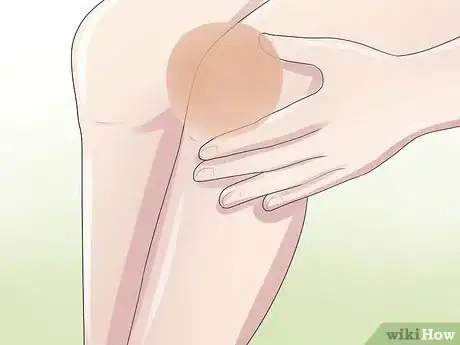
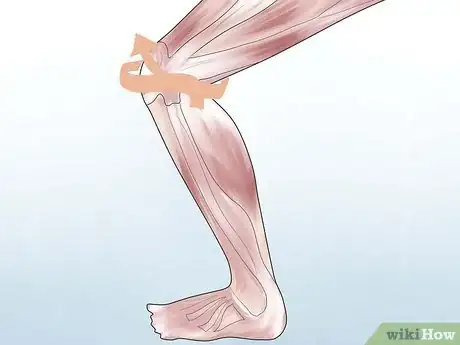

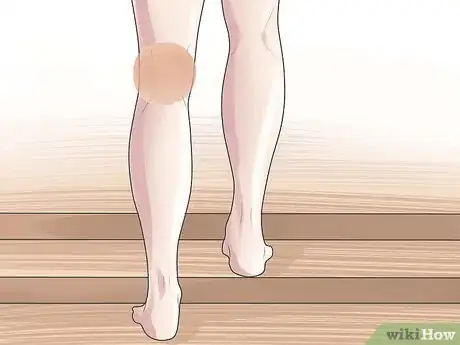
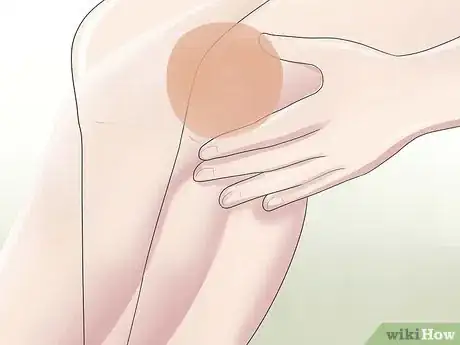
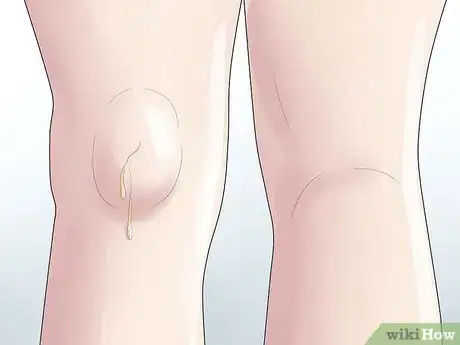
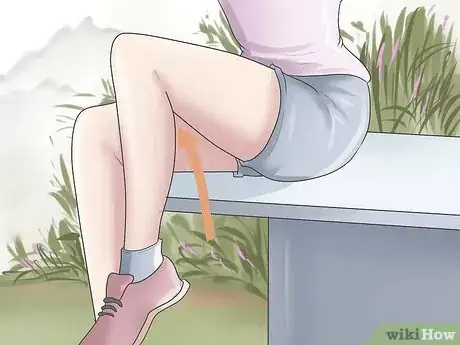

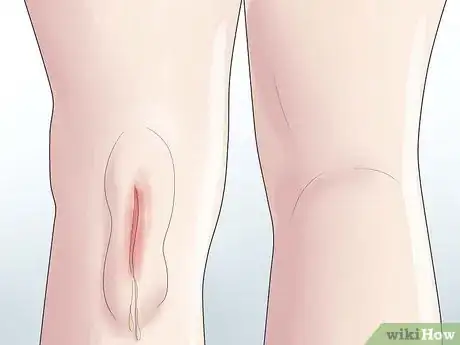
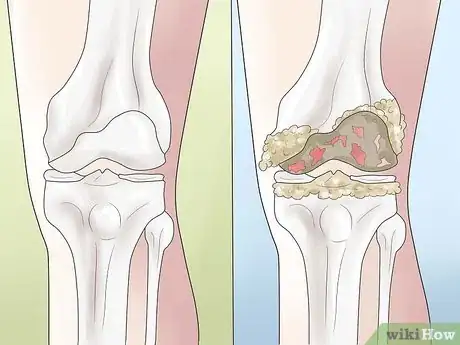
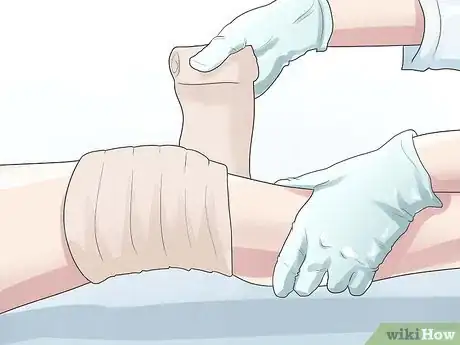
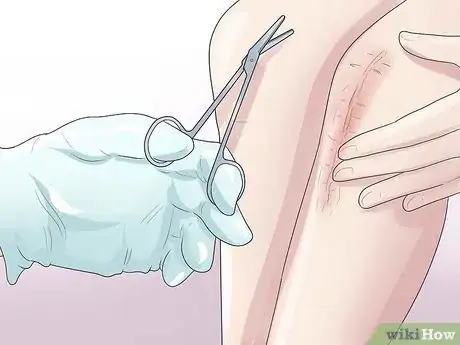

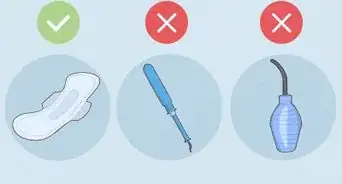
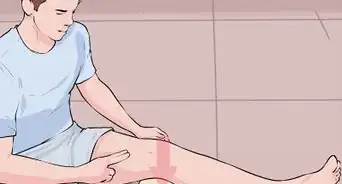




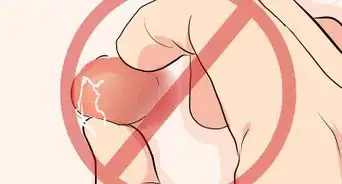



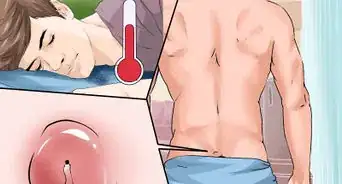
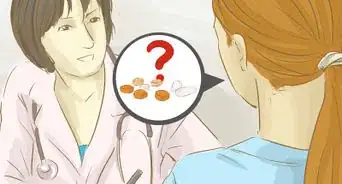
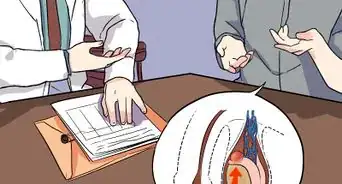









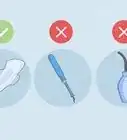





































Medical Disclaimer
The content of this article is not intended to be a substitute for professional medical advice, examination, diagnosis, or treatment. You should always contact your doctor or other qualified healthcare professional before starting, changing, or stopping any kind of health treatment.
Read More...